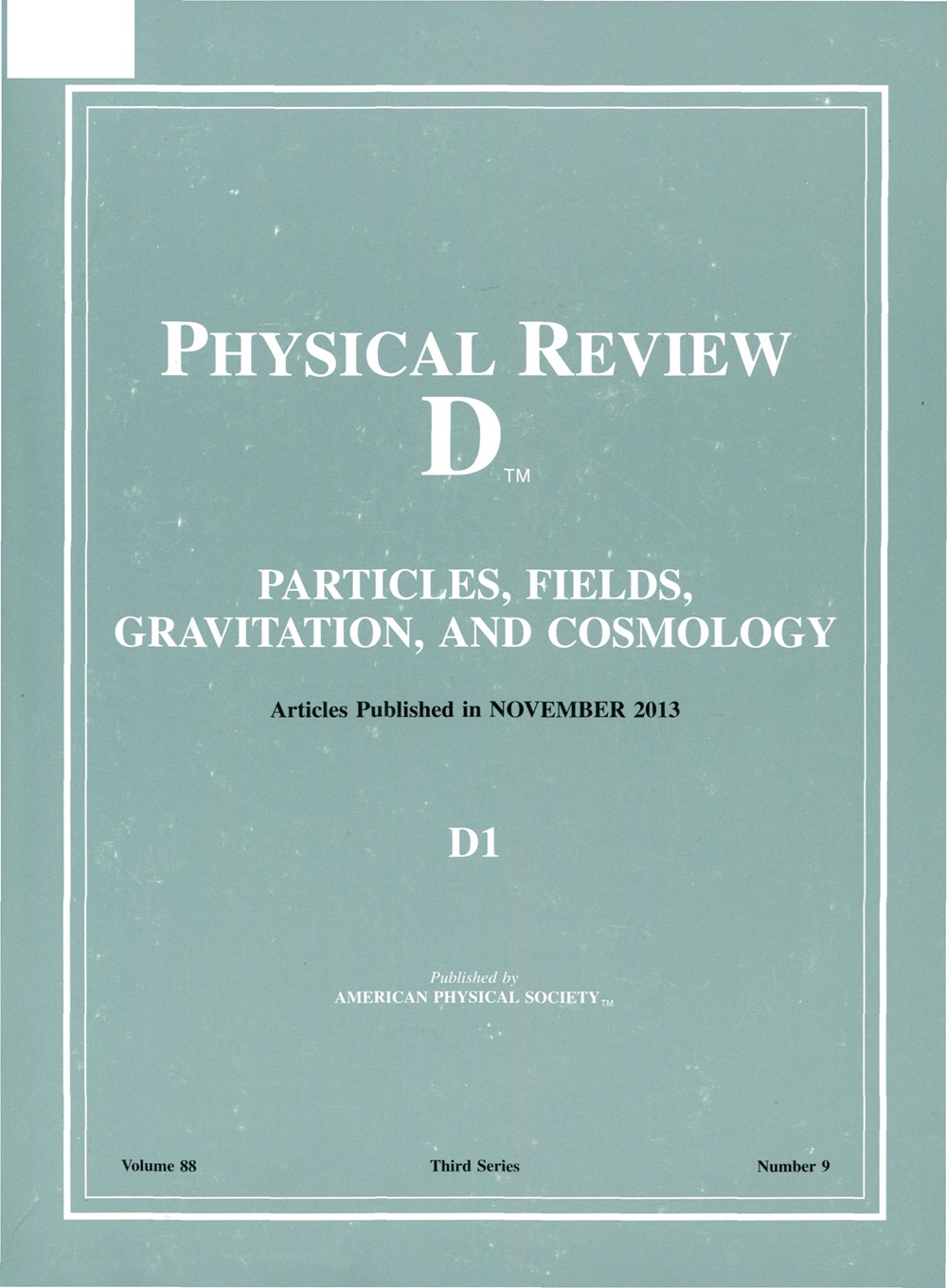最小的暗物质冻结在低再加热温度和直接探测的意义
IF 5.3
2区 物理与天体物理
Q1 Physics and Astronomy
引用次数: 0
摘要
我们研究了可见光部分的再加热温度对直接探测实验中冻结暗物质(DM)基准模型的影响,其中DM的产生是由超轻暗光子介导的。在这里,我们考虑这个基准的一个新制度:我们采用热标准模型(SM)浴的初始温度低于DM质量。由于玻尔兹曼抑制,SM浴的生产速率急剧降低,需要显著增加DM和SM之间的门户耦合,以匹配观测到的残余DM丰度。这种耦合强度的增强增加了预测的DM电子散射截面,使冷冻DM更容易用于当前的直接检测实验。2025年由美国物理学会出版本文章由计算机程序翻译,如有差异,请以英文原文为准。
Minimal dark matter freeze-in with low reheating temperatures and implications for direct detection
We investigate the influence of the reheating temperature of the visible sector on the freeze-in dark matter (DM) benchmark model for direct detection experiments, where DM production is mediated by an ultralight dark photon. Here, we consider a new regime for this benchmark: we take the initial temperature of the thermal Standard Model (SM) bath to be below the DM mass. The production rate from the SM bath is drastically reduced due to Boltzmann suppression, necessitating a significant increase in the portal coupling between DM and the SM to match the observed relic DM abundance. This enhancement in coupling strength increases the predicted DM-electron scattering cross section, making freeze-in DM more accessible to current direct detection experiments. Published by the American Physical Society 2025
求助全文
通过发布文献求助,成功后即可免费获取论文全文。
去求助
来源期刊

Physical Review D
物理-天文与天体物理
CiteScore
9.20
自引率
36.00%
发文量
0
审稿时长
2 months
期刊介绍:
Physical Review D (PRD) is a leading journal in elementary particle physics, field theory, gravitation, and cosmology and is one of the top-cited journals in high-energy physics.
PRD covers experimental and theoretical results in all aspects of particle physics, field theory, gravitation and cosmology, including:
Particle physics experiments,
Electroweak interactions,
Strong interactions,
Lattice field theories, lattice QCD,
Beyond the standard model physics,
Phenomenological aspects of field theory, general methods,
Gravity, cosmology, cosmic rays,
Astrophysics and astroparticle physics,
General relativity,
Formal aspects of field theory, field theory in curved space,
String theory, quantum gravity, gauge/gravity duality.
 求助内容:
求助内容: 应助结果提醒方式:
应助结果提醒方式:


